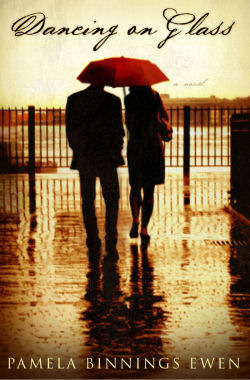|
I
practiced law for twenty-five years before retiring to put all my
efforts into writing. I don’t have a nine-to-five job, but work long
hard hours in bursts of six-minute segments. Structured time and
fixation on words and questions are the tools of a lawyer’s trade that
helped me learn to write.
Passion was the driver.
My first book, Faith
on Trial, was my search for Truth, and I wrote much of it at
night. Although I was raised in a Christian home, as a young adult in
the 1960s I began reading philosophers who posed strong challenges to
the fundamental principles of Christianity. The Bible stories were only
myths and legends, the philosophers wrote. Time
magazine ran a cover story titled “God Is Dead.” Confused, I asked my
pastor and others: How do you know the gospel stories are true?
Their answer? There’s no way to
prove it. You just have to have faith.
But that wasn’t an answer for
me. My heart could not accept what my mind rejected. I was looking for
something to help me to believe again, some evidence that the gospel
stories were true . . . a map, a guide. I plunged into an abyss of
agnostic uncertainty. Wanting to believe, but unable, I became a lost
sheep.
But the Good Shepherd cares for
His lost sheep. After many years in the wilderness, I realized that I
had the tools I needed to answer the question myself. I knew how to
research; my mind was open to finding the answers, whatever they might
reveal; and I had perseverance. I also realized that Christianity is
the only world religion based upon statements of fact, and in the law,
facts are king. So I decided to put the testimony of Matthew, Mark,
Luke, and John on trial. I would test the evangelists’ testimonies
against history, science, archeological findings, ancient writings, and
even medical knowledge.
It wouldn’t be easy to practice
law and find the time and energy to write, but many people work a job
and write. Anthony Trollop wrote masterpieces while working full-time
as a postal clerk. Albert Einstein published revolutionary theories in
physics while working at the Swiss patent office. The research would
take years, and the writing would take more. But I didn’t have a
deadline. I had all the time in the world. So I learned to structure my
time and to separate one part of my life from the other for the
purpose.
And you can too. Each moment has
its season. The key is to compartmentalize work and writing, then
prioritize and focus. That way you can give 100 percent to both your
work and to your writing, but each in its time.
I wrote the first draft of Faith
on Trial mostly at night and early in the morning, but on off
weekends and holidays, I’d really go for it. On those free days, I
wrote in bursts of twelve to sixteen hours, a stream of consciousness
without separating the draft into chapters, just getting the words and
ideas onto the page. During the week, I used evening and morning hours
to review, edit, and rewrite the work I’d done on the days off. And if
I found myself with only a few minutes free, I learned to shut out the
world, jump into the draft, and concentrate on one paragraph or
sentence or word. At these times, think quality not quantity. I used
the same writing method for the initial drafts of my first two novels, The
Moon in the Mango Tree and Walk Back the Cat,
later updated and reissued as Secret of the Shroud.
After years of research and
writing Faith on Trial, I’ll never forget the day I
printed out the first draft, sat down, and began to read. As I read I
slowly realized that at last I’d found the answers to my questions,
proof—for me—beyond a reasonable doubt that the Gospels were true. With
a deep and profound love for Jesus Christ, I returned to Christianity.
The evidence was not a substitute for faith, but it was soil that
allowed my faith to bloom and grow.
Faith on Trial
was
published, its success filled me with a sense of responsibility to
others who, like me, fight dark questions in the night. Within a
Christian framework, I wanted to continue writing, to explore the
subtleties of human nature and relationships as well as ideas and
issues. So I began work on the Moon in the Mango Tree,
the story of my grandmother’s journey to faith in the 1920s. This time
I wanted to show not tell the story.
|
When
Still working long hours as a
lawyer in that fast-paced world, I used segmented time to write. Every
hour not spent working, sleeping, at church, or with my family was
spent writing. Again I used long stretches of time to move the story
forward, writing quickly without worrying too much about the words on
the first draft that no one would ever see; structuring the plot;
introducing the characters, conflict, and change. Just getting the
words down on paper. Again, on weeknights after work when I was most
fatigued, I worked on shaping the story, editing, and rewriting. I
learned to use that time to add layers to the story, as a painter adds
layers of paint to a picture for depth of color and gloss.
Lawyers use ten words for every
one that’s needed. I had to teach myself the craft of writing. I read
books in a different way, concentrating on the author’s talents—how F.
Scott Fitzgerald wrote such fluid dialogue, how Virginia Woolf created
metaphors, how Tolstoy shifted points of view, how Dostoevsky probed
his characters’ minds. I sometimes even deconstruct great novels, using
yellow highlighter on segments I admire, in order to understand the
author’s technique.
I love to write at night. There
are less distractions—no ringing telephones, no interruptions. I can
even brood without feeling guilty! Night is for music when I’m writing.
Sitting in a circle of light, surrounded by darkness, music seems to
release emotions and words from bonds of fatigue. I most love classical
and believe it makes the tired synapses snap. Sometimes when a
particular piece strikes a deep chord, I’ll set it on repeat and play
it over and over while I write. I did that with Liebestraum for The
Moon in the Mango Tree because that wistful piece not only
reflected the tone of the book, but my grandmother used to play it for
me on her piano.
Several years ago I exchanged my
partnership at my firm for full-time writing. Today I have the luxury
of writing any time I want! Ah, this wonderful freedom! My first novel
written entirely since leaving the practice of law is Dancing
on Glass, releasing August 1. It’s romantic suspense, set in
New Orleans in 1974, a place and time in this city that I love. Now I’m
working on the sequel, and those characters are already acting up,
bursting to come out and play.
I begin writing early in the
morning, in that moment between dreams and reality. I limit myself to
three to four hours a day to keep the writing fresh. Sometimes I still
write at night, that magical time. But always, I’m thankful for the
blessing and discipline of those early years.
You too can find the season and
the time. Go for it—one day at a time. Just remember, since time is
precious, think quality not quantity!


|









